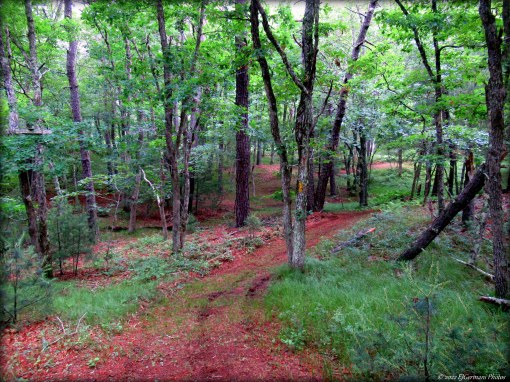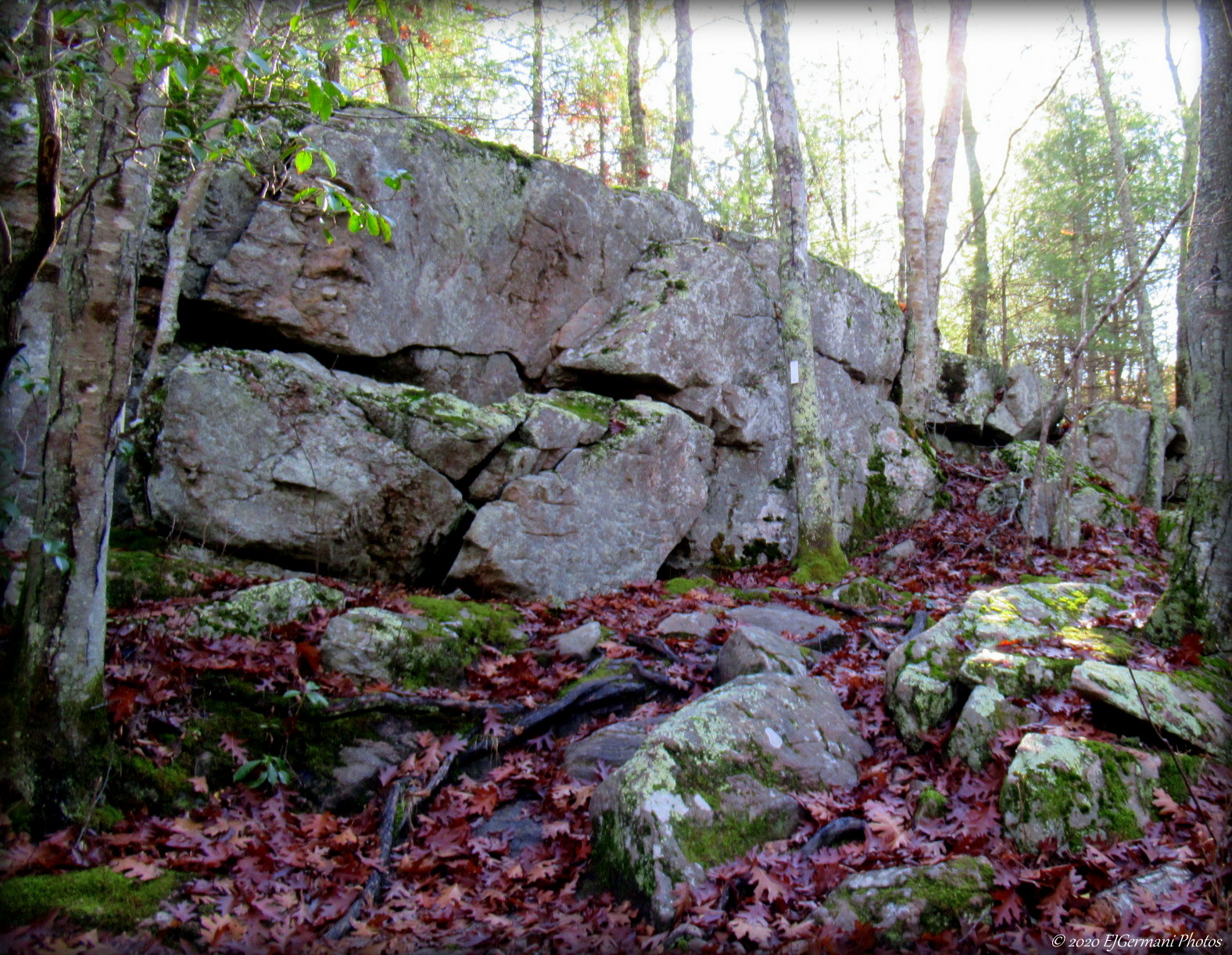- Historic Newport
- Americas Cup Avenue, Newport, RI
- Trailhead: 41°29’21.67″N, 71°19’2.20″W
- Last Time Hiked: October 1, 2021
- Approximate distance hiked: 3.0 miles
- Fairly easy with some hills.
This historic walk of Newport is similar to the Newport Wharf walk from the Ken Weber book, however, this walk focuses on sites a little more northerly than the traditional tourist spots in town in a neighborhood known as “The Point”. This walk is also set up to start at the ferry terminal at Americas Cup Avenue (named after the famed yacht racing event that was held in Newport from 1930 to 1983) making this tour of Newport a perfect addition to a ferry ride from Providence. However, as it is a loop, it can be started at any point. From the ferry terminal head north along Americas Cup Avenue towards Long Wharf. This area is busy. For this walk be sure to use crosswalks. After passing the fire station, you are entering “The Point”. First, you will come to Cardines Field. This baseball field dates back to 1893 making it one of the country’s oldest ballparks. Additions were done over the years including the stonework built during the WPA years of the Great Depression. The field was originally referred to as Basins Field. It was later named after Bernado Cardines, the first citizen of Newport to die during World War I. Continuing along Americas Cup Avenue and to the left you will come upon a small railroad depot. During the days of the railroad, this was the end of the line on Aquidnick Island. This is now home to the Newport Dinner Train. Turning right onto Elm Street, you will begin your tour of some of the oldest and lesser known homes of Newport. Many of the houses in this neighborhood have plaques offering info on the house. Most along these streets were built in the 1700’s including the Captain Weaver House and Clark Spooner House, both on Elm Street. At the end of Elm Street turn left onto Cross Street passing the Gideon Wanton House, then right onto Poplar Street, passing the Captain Bramen House. Turn left onto Thames Street and left onto Farewell Street. Almost immediately on your left you will come upon to Almy-Taggart House and the Cozzens House directly across the street. Continuing ahead on Farewell Street you will come to the entrance of the Common Burial Ground. Turn right into the cemetery (onto Clarke Ave). Almost immediately on the right is the grave of Ida Lewis, the light keeper of the Lime Rock Light (later renamed Ida Lewis Light) in Newport Harbor. From here turn left onto Holmes Avenue and then right onto Dyre Avenue. The graves to the left are mostly of enslaved and freed African Americans. This area is known as God’s Little Acre. Ahead as Dyre Avenue bends to the right and to the right is the grave of William Ellery, one of the Rhode Island delegates to sign the Declaration of Independence. From here continue ahead exiting the cemetery onto Warner Street, turn right, and then left onto Tilden Street. You will pass the Northam House and Nicholas White House before turning right onto White Street. On the left is Governors Graveyard and to the right is a row of notable houses. At the end of White Street turn right onto Farewell Street, then left through a small park with wrought iron fence. Note the Liberty Tree with its larger sprawling branches. Exiting the park turn left onto Thames Street. This section of Thames (lesser known to the tourists shopping at the other end of the street) offers close to 20 homes of note dating to some of the oldest in Rhode Island. Along this stretch you will come upon the John Stevens Shop and directly across the street his home. Turning left onto Coddington Street you will pass the Hookey House and Sherman House. At the end of Coddington you will see the Great Friends Meeting House ahead of you. The original section of this building was built in 1699 with several additions built over the years. Turning right onto Farewell Street you come upon the White Horse Tavern, built in 1673. It is widely regarded as Americas oldest tavern. Turning right onto Marlborough Street you will pass St Paul’s Church and the Newport Jail House (now an inn). Turn left onto Charles Street to leave “The Point”. At the end of Charles Street, cross Washington Square to enter Eisenhower Park. But first look up the street to catch a glimpse of The Colony House. It was built in the 1730’s and was once the State House. In July of 1776 the Declaration of Independence was read to the public here. Crossing Eisenhower Park you will come to a statue of Commodore Perry who was best known for “opening” Japan to the West. After crossing the park turn left onto Touro Street, first passing the Jane Pickens Theater on the right and the District Court House on the left. Crossing Spring Street and continuing along Touro Street you will pass the Touro Synagogue, the Newport Historical Society and Fire Station 5, before coming to the Hotel Viking where Touro Street turns into the famed Bellevue Avenue. Continuing ahead a couple blocks you will pass the Redwood Library on the left. Turn right onto Mill Street and into Touro Park. Here is one of Newport’s biggest mysteries. It is the Old Stone Mill. It is sometimes referred to as the Newport Tower. It is widely thought to be an old windmill but there is much debate to it’s construction date and furthermore of who built it. Some theories have it being built before Columbus reached America, possibly by the Norse, Templars, or Portuguese to name a few. Leaving the park make your way back to Mill Street and follow it west (downhill) where you will pass a massive London Planetree (at house 103) and the Jane Stuart Cottage (the daughter of Gilbert Stuart). Next turn right onto Division Street passing several older houses and then left onto Church Street. Cross Spring Street once again and the Trinity Church cemetery will be on your left. Continue downhill a bit and left into the park named Queen Ann Square. Then left onto Frank Street back uphill to wrap around the Trinity Church. The massive structure was built in 1726. Locals claim that George Washington had given a speech at this church in 1781. Other notable visitors of the church have been Queen Elizabeth II and Desmond Tutu. If the doors are open take a peek inside. The colonial architecture is astounding. From here continue back up to Spring Street and turn right. Follow Spring Street to Memorial Boulevard. St. Marys Church towers on the opposite of the road. This church built in the mid 1800’s was the location of the wedding of John F. Kennedy and Jacqueline Bouvier in 1953. Cross the boulevard here and turn right heading downhill. You will pass the Red Parrot restaurant on the left before crossing Thames Street. The massive stone building in front of you is the Newport Bay Club. Stay to the right of it and you will pass a sculpture simply called “The Wave”. You are now back on Americas Cup Avenue. Look for Bannisters Wharf on the left. Both Bannisters and Bowens Wharf (connected) offer several restaurants and small shops. From here turn left out of the wharf area back onto Americas Cup Avenue, passing the Newport Harbor Hotel, and back to the ferry terminal to complete the 3 mile historic walk.

Cozzens House in “The Point”

Old Stone Mill

Trinity Church













